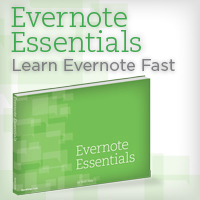I’ve just canceled my membership with Spotify and my narccicism makes me want to tell you all why.
But first, we’ll talk briefly about why I joined: for the same reason everybody else did. All of the music in the world at my fingertips for a flat monthly fee. I could put music on my iPhone and play it back in an airplane if I wanted to. It’s hard to not see this as a good deal if you buy more than one album per month.
I’m afraid, saidly, that the varnish has worn off and I’ve gotten a bit sick of some aspects of Spotify. Please note that these aren’t outright indictments against Spotify, but rather things about it that I ignored at first and gradually drove me to this point.
The Catalog
This is easily the least of my reasons for jumping ship, but it’s a reason nonetheless. Spotify offers access to a dizzying number of tracks, but it’s not all of the music ever recorded. I have a fairly eclectic taste in music and many of the more esoteric artists and albums I like weren’t available on Spotify. If all you listen to is Top 40 or whatever they call it now, then this probably won’t be a problem for you. It was for me.
The Desktop App
Trying to navigate this app was less than pleasant. While “serendipitous discovery” was possible using the Similar Artists" feature, the only way to add new tracks to your Library—as near as I can tell—is to star tracks you don’t own or add them to playlists. Whenever I found myself wanting to check out a new band or album, I’d have to create a playlist. I don’t usually like playlists and I’m the kind of guy who enjoys listening to whole albums, front to back. Spotify made this, well, cumbersome.
The Mobile App
This took the already mediocre feature checklist from the desktop app and shoehorned it into a tiny interface and removed what I consider to be the most useful feature: the library. I could make playlists, again, and they would sync. But otherwise, it was a matter of searching for tracks to play, even if I already owned them.
Both apps suffer from a massive interface headache: the flat track list. It’s not currently possible to browse your library by artist or album, so you just scroll around a gigantic list of songs and pick a starting point. This quickly became more than I was willing to tolerate, catalog size notwithstanding.
iTunes
The obvious benefit to a service like Spotify is that you only need to spend $10 per month to have (largely) unfettered access to a sprawling library of music. iTunes, on the other hand (and, by extension, the Music app on iOS) definitely costs more to fill up, but also gives me way way more control over what music I have and play. We can argue the merits of iTunes as a bloated application, but in my book, it wipes the floor with Spotify in terms of simple usability.
Rdio
Many of you are probably wondering where Rdio (a Spotify competitor) sits in all this. I tried Rdio out for a few weeks when it launched, but found the catalog to be unacceptably lean. Many of my favorite albums and artists were either not present at all or only available as short previews. It didn’t take long for me to jump ship. They may have beefed up their stock since then — I honestly don’t know.
Bottom line: I’m willing to spend a little more to own the music I want and, particularly with iCloud and the imminent iTunes match, finding myself without a track I want to have is likely to become much less frequent. And for those times when I want to hear a song or album that I don’t own and don’t care to buy, I’ll just use Grooveshark. And for when I just want to have music playing without paying much attention to it, Pandora fits that bill for me nicely.


